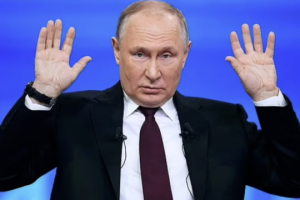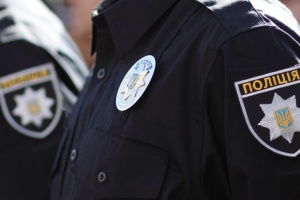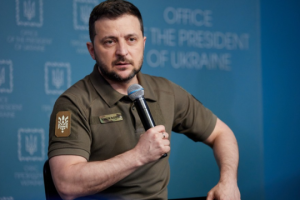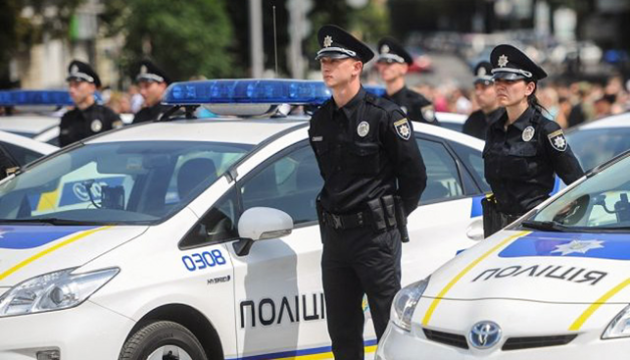
Social media in Poland spreading fake about Ukrainian police officers at farmers' protests
Social media platforms X and Facebook in Poland are spreading a photo of a person in a Polish police uniform with a chevron with the colors of the Polish and Ukrainian national flags. Such a photo misled users, and some of them assumed that it depicted an alleged Ukrainian police officer. This seems to indicate that the Ukrainian security forces maintained public order during recent farmers' protests in Poland, where, in particular, there were clashes with the police.
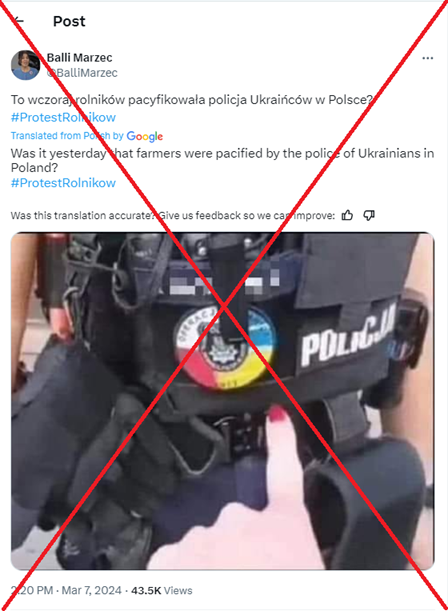
This is a fake. The photo shows a uniform with short sleeves, which does not correspond to the March weather in Poland. In Warsaw, for example, at the beginning of March, temperatures did not exceed 6 degrees Celsius. Currently, Polish police officers dress in warmer uniforms that are more appropriate for the season, as can be seen in the photos from the rallies.
In addition, according to Polish law, a person who does not have Polish citizenship cannot serve in the country's police force. Therefore, Ukrainian police officers could not be involved in the events in Poland.
As for the chevron itself, thanks to comments from users under the posts, it was possible to establish that it has the inscription "Operacja Granica 2022." Many similar stickers with an identical inscription can be found on the internet.
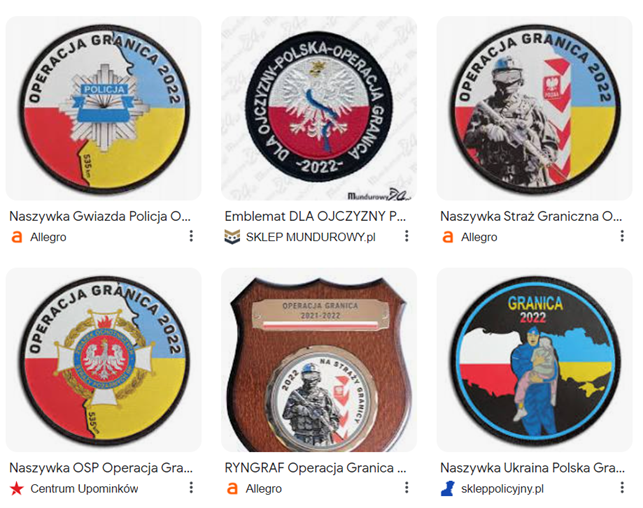
It turned out that such chevrons were worn by employees of the Polish police and other structures when, after the start of Russia's invasion of Ukraine in February 2022, they worked on the border with Ukraine and carried out preventive measures.
"The idea was to express support for the Ukrainians," Rafal Jankowski, chairman of the Independent Self-Governing Trade Union of Police Officers, said in a comment to Konkret24.
Rallies of Polish farmers took place in Warsaw on March 6. Miners, beekeepers and others joined the farmers. They protested against the import of Ukrainian agricultural products and the European Green Deal. Protesters clashed with police officers. As a result of the clashes, 13 police officers were injured, and 26 protesters who behaved aggressively were detained.
It was after the clashes between the demonstrators and the police that a fake was spread in the Polish segment of the internet that the Ukrainian security forces had allegedly begun to control the rallies. The fake is aimed at once again trying to incite enmity between Poles and Ukrainians.
"Anti-Ukrainian news is spread in Polish, and this is done by people who live in the country and receive funds from Russia. These narratives are promoted mostly through Facebook. Viber and Telegram, for example, are not used as much in Poland as they are in Ukraine," said Delfina Ertanowska, a communications specialist at the University of Information Technology and Management in Rzeszow, commenting on the spread of anti-Ukrainian narratives in Poland.
In particular, the fake about "Ukrainian police officers at farmers' protests" was spread by Balli Marzec, a representative of the Kazakh Community Association in Poland who has been living in the country for a long time. Even though she calls herself a "Kazakh opposition journalist," she almost does not mention Kazakhstan in her posts. Instead, she has long been systematically and very actively spreading pro-Russian fakes of a primarily anti-Ukrainian nature on her social media accounts (notably X), as well as disinformation and manipulative information directed against Israel, the U.S., and the EU. She approaches this work quite creatively, adding her own comments in Polish to the fakes. Users who are the main distributors of anti-Ukrainian fakes in Poland (Kresy.pl, Martin Demirov, Ministerstwo Prawdy, etc.) are a constant source of information for her. This indicates that there is an extensive and interconnected network of pro-Russian haters who spread anti-Ukrainian and anti-Western disinformation in Russia's interests.
Dmytro Badrak, Yuriy Banakhevych

